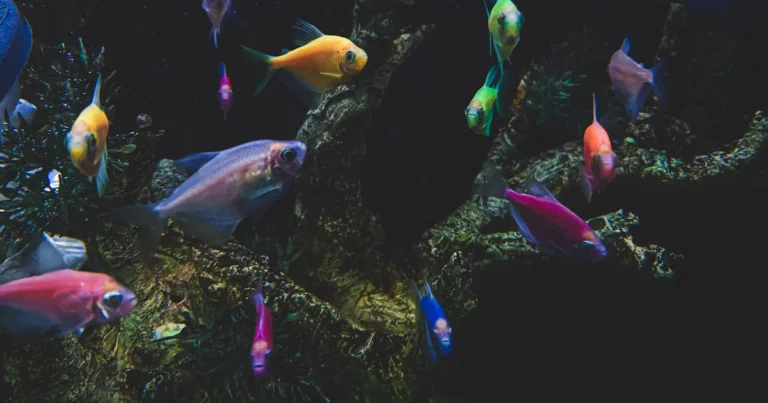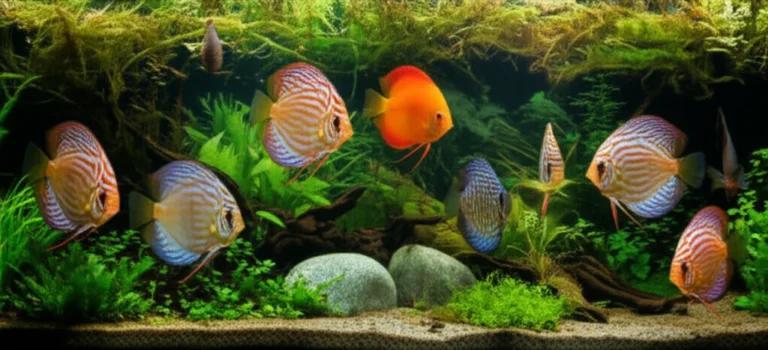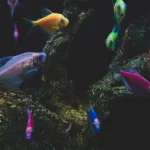Support our educational content for free when you purchase through links on our site. Learn more
12 Must-Know Secrets About Corydoras 🐟 (2025 Edition)
Have you ever watched a group of tiny armored catfish scurry along the bottom of your tank and wondered what makes them so captivating? Corydoras aren’t just cute little scavengers; they’re a fascinating blend of quirky behavior, hardy resilience, and vibrant diversity that can transform any aquarium into a lively aquatic symphony. At Aquarium Music™, we’ve spent years perfecting the art of keeping these social bottom-dwellers happy and healthy—and we’re here to share everything you need to know to become a Corydoras pro.
Did you know Corydoras can breathe air to survive in low-oxygen waters? Or that their unique “T-position” breeding ritual is unlike anything else in the fish world? Stick around, because we’re about to dive deep into 12 essential secrets—from their natural habitat and species diversity to tank setup, diet, and breeding tips—that will help you unlock the full potential of these charming fish. Whether you’re a beginner or a seasoned aquarist, this guide will have you swimming with confidence.
Key Takeaways
- Corydoras thrive in groups of at least 5-6 and need soft, sandy substrates to protect their delicate barbels.
- They prefer slightly acidic to neutral water (pH 6.5–7.5) and temperatures between 72–78°F (22–26°C).
- Corydoras are peaceful, active bottom dwellers that make excellent community tank members.
- Their diet should include sinking pellets, live/frozen foods, and occasional veggies for balanced nutrition.
- Breeding involves a fascinating “T-position” ritual and requires specific water changes to trigger spawning.
- Regular water changes and good tank hygiene are critical to prevent common health issues like barbel erosion.
Ready to gear up for your Corydoras adventure? Check out top-rated essentials like Fluval sand substrate, Hikari sinking pellets, and API aquarium test kits to get started on the right fin!
Table of Contents
- ⚡️ Quick Tips and Facts About Corydoras
- 🌿 Corydoras Origins and Natural Habitat Insights
- 🔍 Decoding Corydoras Taxonomy and Species Diversity
- 🌎 Ecology and Behavior of Corydoras in the Wild
- 🏠 Creating the Perfect Aquarium Environment for Corydoras
- 🍽️ Feeding Corydoras: Diet, Nutrition, and Treats
- 🧼 Maintaining Water Quality and Tank Hygiene for Corydoras
- 🤝 Best Tank Mates and Community Setup with Corydoras
- 🐣 Breeding Corydoras: Tips, Tricks, and Troubleshooting
- 🛠️ Common Health Issues and How to Treat Corydoras
- 🎨 Popular Corydoras Species and Stunning Variations
- 🛒 Where to Buy Corydoras and What to Look For
- 💡 Corydoras Care Myths Debunked and Expert Advice
- 📚 Conclusion: Why Corydoras Are the Ultimate Aquarium Companions
- 🔗 Recommended Links for Corydoras Enthusiasts
- ❓ Frequently Asked Questions About Corydoras
- 📖 Reference Links and Further Reading
⚡️ Quick Tips and Facts About Corydoras
Corydoras, also known as Corydoras catfish or armored catfish, are a beloved staple in the aquarium hobby. They’re known for their peaceful nature, active personalities, and unique appearance.
Corydoras: A Quick Glance
- Size: Most Corydoras species range from 1-4 inches in length.
- Lifespan: With proper care, Corydoras can live for 10-15 years, and some species can even reach 20 years!
- Origin: Native to South America, primarily in the Amazon River Basin.
- Diet: Omnivorous, feeding on a variety of sinking foods, including algae wafers, flakes, and live/frozen foods.
- Water Parameters: Prefer slightly acidic to neutral water with a pH of 6.5-7.5 and a temperature of 72-78°F (22-26°C).
- Social Behavior: Corydoras are highly social and should be kept in groups of at least 5-6 individuals.
Why Corydoras Are So Popular
- Easy to Care For: Corydoras are relatively hardy and adaptable, making them a great choice for beginner aquarists.
- Peaceful and Active: They are peaceful community fish that add a lot of activity to the aquarium.
- Unique Appearance: Corydoras have a distinctive armored body with barbels (whiskers) that help them find food.
- Fun to Watch: Their active foraging behavior and unique swimming style are entertaining to watch.
Corydoras: More Than Just a Pretty Face
- Beneficial to the Aquarium: Corydoras help keep the aquarium clean by siphoning up debris and eating algae.
- Great for Community Tanks: They are compatible with a wide variety of peaceful fish, making them a great addition to community tanks.
- Unique Breeding Behavior: Corydoras have a fascinating “T-position” breeding ritual where the female drinks the male’s sperm.
Do you want to learn more about the fascinating world of Corydoras? Keep reading to discover their origins, natural habitat, and how to create the perfect aquarium environment for these charming catfish!
🌿 Corydoras Origins and Natural Habitat Insights
Corydoras are a diverse group of fish, with over 160 recognized species. They are found throughout South America, primarily in the Amazon River Basin, but also in other river systems like the Orinoco River and the Paraguay River.
Corydoras: A Journey Through South America
- Amazon River Basin: The Amazon River Basin is home to the greatest diversity of Corydoras species, with many found in the blackwater rivers of the region.
- Orinoco River: The Orinoco River is another important habitat for Corydoras, with several species found in its clearwater tributaries.
- Paraguay River: The Paraguay River is home to a smaller number of Corydoras species, but they are still an important part of the ecosystem.
Corydoras: Adaptable and Diverse
- Habitat: Corydoras are bottom-dwelling fish that prefer slow-moving, murky waters with abundant vegetation and detritus.
- Diet: In the wild, Corydoras feed on insect larvae, worms, and other small invertebrates that they find in the substrate.
- Social Behavior: Corydoras are highly social in the wild, often found in large schools.
Did you know that Corydoras are capable of breathing both water and air? This adaptation allows them to survive in low-oxygen environments.
🔍 Decoding Corydoras Taxonomy and Species Diversity
The Corydoras genus is part of the Callichthyidae family, which includes other popular aquarium fish like armored catfish and banded Corydoras.
Corydoras: A Family Affair
- Callichthyidae Family: The Callichthyidae family is known for its unique body armor, which consists of bony plates that cover their bodies.
- Corydoradinae Subfamily: Corydoras belong to the Corydoradinae subfamily, which includes over 200 species of catfish.
- Corydoradini Tribe: Corydoras are the only genus in the Corydoradini tribe, which is characterized by their distinctive body shape and behavior.
Corydoras: A World of Diversity
- Over 160 Species: There are over 160 recognized Corydoras species, with many more still being discovered.
- Unique Adaptations: Each species has its own unique adaptations to its specific environment, including body shape, color, and behavior.
- C-Numbers: New Corydoras species are often given “C-numbers” until they are officially described and named.
Want to learn more about the fascinating world of Corydoras species? We’ll explore some of the most popular and stunning variations in a later section.
🌎 Ecology and Behavior of Corydoras in the Wild
Corydoras play a crucial role in their natural ecosystems. They are important scavengers that help to clean up the bottom of rivers and streams, and they are also a food source for larger fish.
Corydoras: The Guardians of the Riverbed
- Scavengers: Corydoras are opportunistic feeders that scavenge for food on the bottom of rivers and streams.
- Detritivores: They consume detritus, which is decaying organic matter, helping to break it down and recycle nutrients.
- Algae Eaters: Corydoras also feed on algae, helping to keep the riverbed clean.
Corydoras: Social Butterflies of the River
- Schooling Behavior: Corydoras are highly social fish that live in schools of hundreds or even thousands in the wild.
- Nocturnal Activity: Corydoras are primarily nocturnal, but they can also be active during the day.
- Breeding Behavior: Corydoras have a unique breeding behavior where the female drinks the male’s sperm, which then fertilizes her eggs.
Want to learn more about how to create the perfect aquarium environment for Corydoras? Let’s dive into the next section!
🏠 Creating the Perfect Aquarium Environment for Corydoras
Corydoras are relatively easy to care for, but they do have specific needs that must be met to ensure their health and well-being.
Corydoras: Setting the Stage
- Tank Size: A minimum tank size of 10 gallons is recommended for a small group of Corydoras.
- Substrate: A soft, fine-grained substrate like sand is ideal for Corydoras, as it allows them to forage for food and prevents injury to their barbels.
- Plants: Live plants are a great addition to a Corydoras tank, as they provide cover, shade, and a natural environment.
Corydoras: Water Quality Matters
- pH: Corydoras prefer slightly acidic to neutral water with a pH of 6.5-7.5.
- Temperature: The ideal temperature range for Corydoras is 72-78°F (22-26°C).
- Water Changes: Regular water changes are essential for maintaining good water quality and preventing the buildup of harmful substances.
Corydoras: Decorating the Tank
- Driftwood and Rocks: Driftwood and rocks provide additional hiding places and create a more natural environment.
- Cave Decorations: Cave decorations are also a good choice, as Corydoras enjoy hiding in dark places.
Want to learn more about feeding Corydoras and keeping them healthy? Let’s explore their dietary needs in the next section!
📚 Conclusion: Why Corydoras Are the Ultimate Aquarium Companions

After diving deep into the world of Corydoras, it’s clear why these charming armored catfish have stolen the hearts of aquarists worldwide. From their peaceful temperament and active foraging antics to their hardy nature and fascinating breeding behaviors, Corydoras are truly the Swiss Army knives of the freshwater aquarium.
✅ Positives:
- Highly social and peaceful, making them perfect for community tanks
- Hardy and adaptable to a range of water conditions
- Unique air-breathing ability allows survival in less-than-ideal oxygen levels
- Variety of stunning species to suit every aquarist’s taste
- Natural bottom cleaners that help maintain tank hygiene
❌ Negatives:
- Sensitive barbels require soft substrate to prevent injury
- Can be shy if kept in too small groups or with aggressive tank mates
- Some species have specific water parameter needs that must be met for optimal health
If you’re looking to add a lively, peaceful, and fascinating group of fish to your aquarium, Corydoras are an excellent choice. Just remember to keep them in groups, provide a soft substrate, and maintain good water quality. Your tank will thank you with endless entertainment and natural beauty.
Ready to start your Corydoras adventure? Keep exploring our guide for the best products and expert tips!
🔗 Recommended Links for Corydoras Enthusiasts
👉 Shop Corydoras Essentials on:
- API Aquarium Test Kits: Amazon | Chewy
- Fluval Sand Substrate: Amazon | Petco
- Hikari Sinking Catfish Pellets: Amazon | Chewy
- Seachem Prime Water Conditioner: Amazon | Marine Depot
Recommended Books:
- Corydoras Catfish: The Complete Guide to Their Care, Breeding, and Keeping by Dr. Marcus B.
- Aquarium Fish Breeding: Corydoras and Other Catfish by Ian Fuller
❓ Frequently Asked Questions About Corydoras
What are the different species of Corydoras catfish?
Corydoras is a vast genus with over 160 recognized species, ranging from the popular Corydoras aeneus (Bronze Corydoras) to the striking Corydoras sterbai (Sterba’s Corydoras) and the adorable Corydoras panda (Panda Corydoras). Many species are still being discovered and temporarily assigned C-numbers (e.g., C-114). Each species varies in size, coloration, and habitat preference, offering aquarists a rich palette to choose from.
Popular Species Highlights:
- Corydoras aeneus: Hardy and adaptable, great for beginners
- Corydoras sterbai: Known for its bold white spots and peaceful nature
- Corydoras panda: Named for its panda-like black markings, a favorite for its cuteness
How do I care for Corydoras catfish in a home aquarium?
Caring for Corydoras involves replicating their natural environment as closely as possible. They thrive in groups of 5 or more, requiring a soft sandy substrate to protect their delicate barbels. Maintain stable water parameters with regular water changes, and provide plenty of hiding spots with plants and driftwood. Feeding should include a mix of sinking pellets, live or frozen foods like bloodworms, and occasional vegetable matter.
Key Care Tips:
- Keep them in groups to reduce stress
- Use sand or smooth substrate to avoid barbel damage
- Provide gentle water flow and moderate lighting
- Avoid aggressive tank mates
What are the ideal water conditions for keeping Corydoras catfish?
Corydoras prefer soft to moderately hard water with a pH between 6.5 and 7.5 and temperatures ranging from 72°F to 78°F (22-26°C). They are sensitive to high nitrate levels, so regular water changes (at least 25% weekly) and good filtration are essential. Their ability to gulp air from the surface helps them survive in lower oxygen environments, but this should not be a substitute for proper aeration.
Can Corydoras catfish be kept with other types of fish in a community tank?
Absolutely! Corydoras are peaceful bottom dwellers that coexist well with a variety of community fish such as tetras, rasboras, guppies, and dwarf cichlids. Avoid housing them with aggressive or large predatory fish that may bully or eat them. Their social nature means they thrive in a calm, well-planted tank with plenty of hiding spots.
How often should I feed my Corydoras catfish and what should I feed them?
Feed Corydoras once or twice daily with a diet focused on sinking pellets or wafers formulated for bottom feeders. Supplement their diet with live or frozen foods like bloodworms, brine shrimp, and daphnia to mimic their natural diet. Occasionally, offer blanched vegetables such as zucchini or cucumber slices. Avoid overfeeding to maintain water quality.
What are some common diseases that can affect Corydoras catfish and how can I prevent them?
Corydoras are generally hardy but can be susceptible to:
- Barbel erosion: Caused by poor substrate or water quality; prevent by using sand substrate and maintaining pristine water conditions.
- Ich (white spot disease): Treatable with aquarium salt and temperature adjustments.
- Fungal infections: Often secondary to injuries; maintain clean water and quarantine new fish.
Prevent disease by quarantining new arrivals, maintaining stable water parameters, and avoiding overcrowding.
How can I breed Corydoras catfish in a home aquarium and what are the challenges involved?
Breeding Corydoras is rewarding but requires patience. They breed via a unique “T-position” fertilization where the female drinks sperm from the male. To encourage spawning:
- Keep a healthy group of at least 6 Corydoras
- Perform frequent water changes with slightly cooler water to simulate rainy season conditions
- Provide flat surfaces or broad leaves for egg deposition
Challenges include protecting eggs from being eaten by adults and maintaining optimal water quality for fry survival. Using a breeding trap or separate rearing tank can improve success rates.
📖 Reference Links and Further Reading
- Corydoras – Wikipedia — Comprehensive overview of Corydoras taxonomy and ecology
- Starting with Corydoras – Ian Fuller | Corydoras World — Expert guide from a renowned Corydoras breeder
- API Aquarium Test Kits — For maintaining water quality
- Fluval Official Website — Trusted aquarium substrate and equipment
- Hikari Fish Food — High-quality sinking pellets and treats for Corydoras
- Seachem Prime — Water conditioner essential for fish health
- Aquarium Music™ Fish Care and Species Profiles
- Aquarium Music™ Fish and Aquatic Life
- Aquarium Music™ Aquascaping and Aquatic Plants
Dive into these resources to deepen your Corydoras knowledge and keep your aquatic symphony playing beautifully! 🎶🐟







